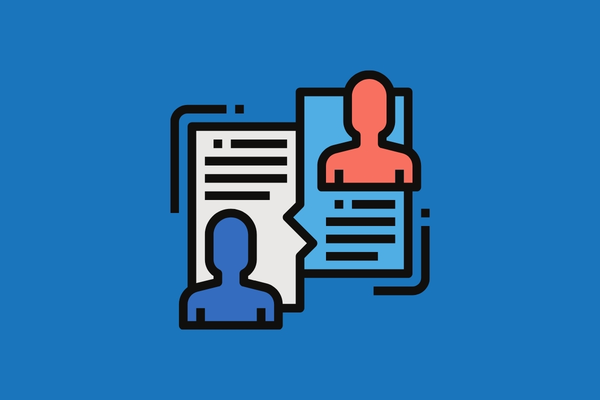Personality and behaviour are two different characteristics that help define us. These aspects are measurable through the use of personality tests and behavioural assessments. Although we often use these terms interchangeably, there is a difference between personality and behaviour. Our clients often ask us about the difference between a personality test and behavioural assessments. Let’s explore personality and behaviour, how they are different and how they are linked.
What is Personality?
The American Psychological Association defines personality as the “individual differences in characteristic patterns of thinking, feeling and behaving.” Our personality traits define our patterns of behaviours, thoughts and emotions and determine how we think and feel and why. Our personality traits remain reasonably stable throughout our lives.
Coaches and consultants often use personality assessments to help people build awareness about themselves and their strengths, weaknesses, and preferences. Some personality tests analyse where people rank in regards to specific traits. For example, whether they are high in extroversion or low in another attribute such as conscientiousness. One of the most popular personality style assessments is the five-factor model of personality.
What is Behaviour?
According to the Merriam Webster Dictionary, behaviour encompasses how we react or respond to external stimuli in our environment. Behaviour determines what we do to make something happen to keep things from changing. Our behaviour is our response to things happening internally, in our thoughts and feelings, and externally in our current surroundings. In comparison to personality, we can adapt and change our behaviour depending on our current situation.
HR Consultants and Business Coaches typically analyse behaviour using a DISC profile assessment. A DISC assessment analyses an individual’s strengths and development areas. We usually all display a range of behavioural traits, and some consume more energy than others. A DISC assessment tells us which behaviours use the least energy and which use the most. They indicate how an individual prefers to respond to problems, people, work environment and procedures. DISC based assessments are practical when used for personal development, coaching, team building and interpersonal conflict resolution.
Extended DISC® Theory of Behaviour
We can divide our behaviours into different layers. The most prominent are:
- Conscious Behaviour
- Unconscious Behaviour
- Behavioural Filters
- Cultural Heritage
1. Conscious Behaviour
Conscious behaviour is our learned behaviour that relates directly to a situation or people involved. It combines perceived requirements and inner behavioural motivation to adjust our behaviour in a particular situation or to a specific person. It is our determined, best possible approach to stimuli. At this level, we consciously adjust our behaviour to different environments. Adapting our behaviour often requires significant use of our energy resources. This adjustment can sometimes cause us to operate under extreme stress or pressure if we are behaving far from our natural behavioural style.
2. Unconscious Behaviour
Unconscious behaviour is the way we prefer to respond to a stimulus and how we naturally express ourselves. The behaviour at this level is the most natural for us, it is the style we use the most, and it also requires the least energy. Besides being a behavioural style we most often use, it is also the style we use when we have the least control of ourselves, like under pressure or when we need to respond quickly.
3. Behavioural Filters
Behavioural filters are distinctly individual. They can be utilised and changed quickly. The most significant behavioural filters are; attitudes, values, skills, knowledge, experience, physical condition and mental condition.
4. Cultural Heritage
Cultural Heritage represents all that we have adopted during our lives. It includes the cultural norms, values, ethics and morals of our culture that we’ve learned and experienced. It is something in our inner self that we are not even fully aware of. It is implicit by nature, and we cannot transfer it to anyone else.
Most DISC personality tools only measure a person’s adjusted behavioural style or conscious behaviour. This is often referred to as your role style or the style you feel you need to emphasise to succeed. The adjusted style changes as your roles change.
The difference between an Extended DISC® assessment and other DISC tools is its ability to also report on your natural style. This allows the assessments to measure behaviour at a deeper unconscious level to exclude the impact of the environment. Your natural style identifies your natural behaviour style, taking the least amount of energy and effort. It also reports your adjusted or conscious style, which demonstrates how you are adjusting to your current environment. These two profiles allow you to recognise your true strengths and development areas to enhance your performance. It also enables you to identify if you are majorly adjusting your style, leading to stress or pressure.
One client said, “DISC measures who shows up on the first date and Extended DISC® measures who you are in a relationship five years later”.
What is the Difference Between Personality and Behaviour
Personality not only influences how we respond in our environment, but it also determines how we act and think in particular ways. We express our personality through our thinking, emotions and our behaviour. On the other hand, behaviour is how we come across to others in our actions. We express our behaviour through our actions. In essence, behaviour is what we do, and personality is how we think and feel.
The main difference between personality and behaviour is that we observe personality through a person’s thinking, emotional patterns, and behaviours. However, we observe behaviour by evaluating a person’s patterns in their actions and mannerisms.
Another significant personality and behaviour difference is that our personality remains relatively stable, whereas we can adapt our behaviour daily in response to our environment. Our personality forms very early in our lives through a combination of genetic and environmental factors. In comparison, our behaviour changes as we age, develop and in response to our current surroundings.




